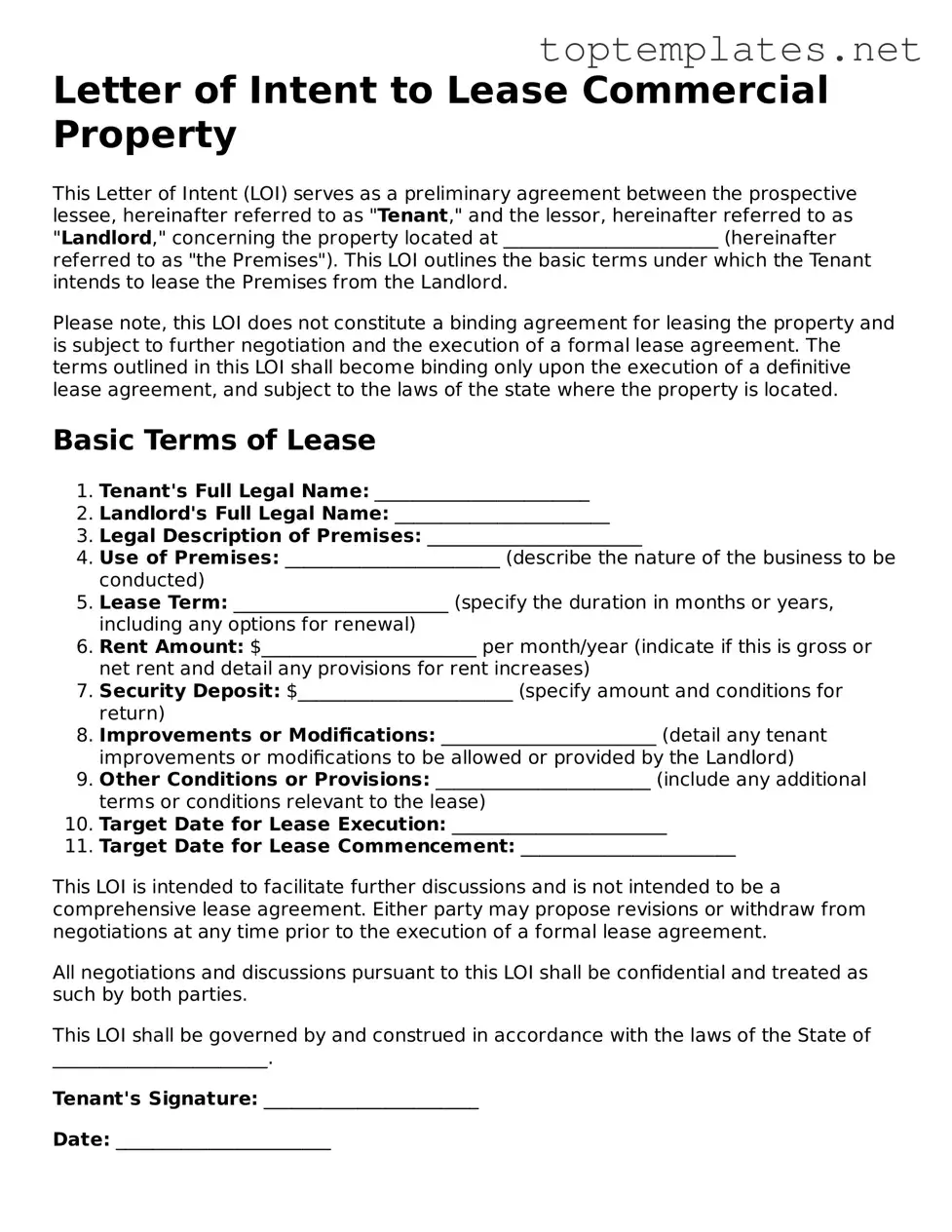What is a Letter of Intent to Lease Commercial Property?
A Letter of Intent to Lease Commercial Property is a written document that expresses a party's preliminary agreement towards leasing commercial property. This letter outlines the basic terms and conditions under which the lessee is willing to lease the property from the lessor and serves as a foundation for negotiating the formal lease agreement.
Why is sending a Letter of Intent important?
Sending a Letter of Intent is important because it formally initiates the negotiation process between the prospective tenant and the property owner. It demonstrates the tenant's serious interest in the property and sets the stage for discussing lease terms in more detail. This step can help clarify expectations and reduce misunderstandings early in the leasing process.
What key elements should be included in a Letter of Intent?
A comprehensive Letter of Intent should include elements such as the proposed lease term, lease rate or rental amount, description of the property, intended use of the property, any requirements for modifications or improvements, responsibilities for repairs and maintenance, options to renew the lease, and any conditions or contingencies that the agreement is subject to.
Is the Letter of Intent legally binding?
Generally, a Letter of Intent itself is not legally binding with respect to the lease obligations. However, it may contain provisions that are binding, such as confidentiality agreements or exclusivity clauses. It's essential to clearly state which parts, if any, are intended to be legally binding.
Can negotiations continue after a Letter of Intent has been sent?
Yes, negotiations can and often do continue after a Letter of Intent has been sent. The Letter of Intent serves as a starting point for negotiations, not the final agreement. Both parties can discuss and modify the terms until a formal lease agreement is signed.
What happens if the landlord and tenant cannot agree on terms after a Letter of Intent is issued?
If the landlord and tenant cannot agree on the terms following a Letter of Intent, either party can choose to walk away from the negotiations. Since the Letter of Intent is generally not binding regarding the lease agreement, it does not compel either party to finalize the lease if terms cannot be agreed upon.
How does a Letter of Intent differ from a lease agreement?
A Letter of Intent is a preliminary document that outlines the basic terms and conditions for a potential lease agreement and expresses an interest to enter into a lease. A lease agreement, on the other hand, is a legally binding contract that formalizes the leasing arrangement, specifying in detail the rights and obligations of each party.
Can a tenant withdraw a Letter of Intent?
Yes, a tenant can generally withdraw a Letter of Intent before a formal lease agreement is signed, especially if it is stated within the Letter that it is not legally binding. However, it is crucial to communicate such a decision promptly and professionally to the landlord to maintain goodwill.
Should a Letter of Intent be drafted by a legal professional?
While it's not mandatory to have a legal professional draft a Letter of Intent, it is advisable. A lawyer can ensure that the letter clearly communicates the tenant's intentions, includes all necessary components, and identifies any binding provisions, thus avoiding potential legal issues.
Is a Letter of Intent necessary for every commercial lease negotiation?
While not every commercial lease negotiation requires a Letter of Intent, it is beneficial in many situations. It can help clarify the terms and conditions from the outset, making the lease negotiation process more efficient and reducing the risk of misunderstandings. However, the necessity may vary depending on the complexity of the lease and the preferences of the parties involved.
